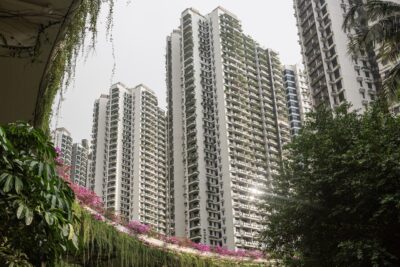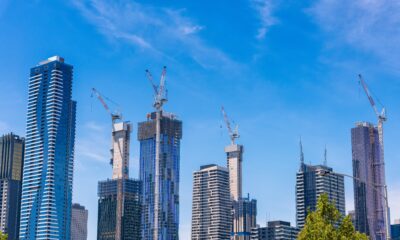Expats still eye Malaysian property for sound investment

The current narrative about Malaysia is one of cautious optimism: a residential property market that deserves more than a perfunctory glance, if not a leap of faith.
Amid the ongoing sales lull and socio-political twists and turns of late, the Malaysian economy still holds an evergreen appeal to foreign property seekers. The nation boasts the second-highest per capita income in Southeast Asia after Singapore, with more than 50 percent of the GDP generated by local demand. It is on track to achieve the status of developed nation between 2022 and 2023.
“Looking at Malaysia’s forthcoming status as a fully developed and higher-income country, the expectation is for a fast growth of property values within the next five years,” said Dr. Daniele Gambero, CEO and co-founder of strategic marketing consultancy firm REI Group of Companies, and a longtime judge at the annual PropertyGuru Asia Property Awards (Malaysia) competition.
Residential property values in Malaysia are considered “still very low” relative to other currencies, noted Gambero, an Italian expatriate who has been living in the country since 2000. “A cheap ringgit has contributed to raising foreigners’ interest into our local real estate, together with a relatively low cost of living, quality of education, medical care, and the beauty of our local natural sites.”
One popular new development, the Best Luxury Condo Development-winning The Ritz-Carlton Residences, Kuala Lumpur, Jalan Sultan Ismail by Berjaya Corporation Berhad, offered nearly 290 units at prices between MYR2.7 million and MYR12.8 million (USD661,000-3.1 million). In comparison, similar luxury properties can fetch up to USD8.5 million million per unit in Bangkok or Jakarta.
A viable second home for foreigners
Foreigners in Malaysia can own a condo, bungalow, terrace house, landed property, and more as long as such units are valued at MYR 1 million or more, according to prevailing foreign ownership rules.
Despite reports of a suspension, the Malaysia My Second Home (MM2H) programme is still very much in place, giving foreign property seekers access to units worth less than MYR1 million. The scheme dangles 10-year visas, renewable for another 10 years, to foreigners with enough funds and assets.
While it has remarkably scrutinised Chinese-backed infrastructure projects, the new government has not driven a final wrench in inbound investment from China, the top source of applications for the MM2H programme. As of last year, Chinese citizens have been able to own 1,664 homes through the programme since 2007.
“The new administration is actually not at all against Chinese purchasing properties in Malaysia. Our prime minister (Mahathir Mohamad) has clearly stated that only the ‘automatic citizenship’ is out of discussion or application,” Gambero said.
Bona fide retirement destination
The MM2H programme was partly instituted to groom Malaysia as a bona fide retirement destination. Next to the Chinese, citizens of the United Kingdom have been able to own 357 units through MM2H, while those from Australia and the United States have been able to acquire 147 and 115 units, respectively.
“Australians and Europeans are looking at Malaysia as a safe and cheap country to spend several months a year once they are retired,” Gambero said, recommending Penang and Kota Kinabalu for an abundance of retirement homes with easy access to quality medical services.

Foreign property investors would do well to seek properties in not only Kota Kinabalu but also Kuala Lumpur, Penang, and Johor Baru, he added. Similarly, Ipoh and Melaka have shown very good potential for future growth, given the infrastructure projects that are being constructed to ease accessibility in these destinations.
Fast capital gains
“For those foreign investors looking at fast capital gain, the best advice I can give is to follow the economic corridors, especially Iskandar Malaysia, Kuantan (East Coast Economic Region), Score (Sarawak Corridor of Renewable Energy), and MVV 2.0 (Malaysian Vision Valley 2.0).”
Further economic growth is likely to happen in these areas within the next five years, and property investors should extend their holding periods in the interim.
There are now more than 106,000 foreigners living in their own homes in Malaysia, as per the latest census data. For Gambero, management of negative perceptions is key to drawing more investors and end-user property buyers to Malaysia as it reckons with changes.
“I’m still aggressive in looking for properties as per the old rule that ‘bad times are best times’ but not everybody is getting this point,” he said.
“If only we will be able to manage differently the partially negative perception that the market, in general, is having, I’m expecting 2019 to be another good year for Malaysia.”
What developments do you think meet foreigners investors demand? Nominate those projects to the 2019 PropertyGuru Asia Property Awards (Malaysia). Nominations close on 1 March.
Recommended
Meet the vagabond architect behind India’s housing scene
Vinu Daniel is helping to shake up India’s home building setting
Where Asian real estate stands in a fragmented, warmer world
Asia’s real estate industry faces many and varied challenges as external factors continue to bite
6 sights to see in Singapore’s Marine Parade
Handily located Marine Parade has emerged as a vibrant investment choice in the Lion City
There’s a township dedicated to health and wellness in Malaysia
Property seekers have their health needs catered for at KL Wellness City








